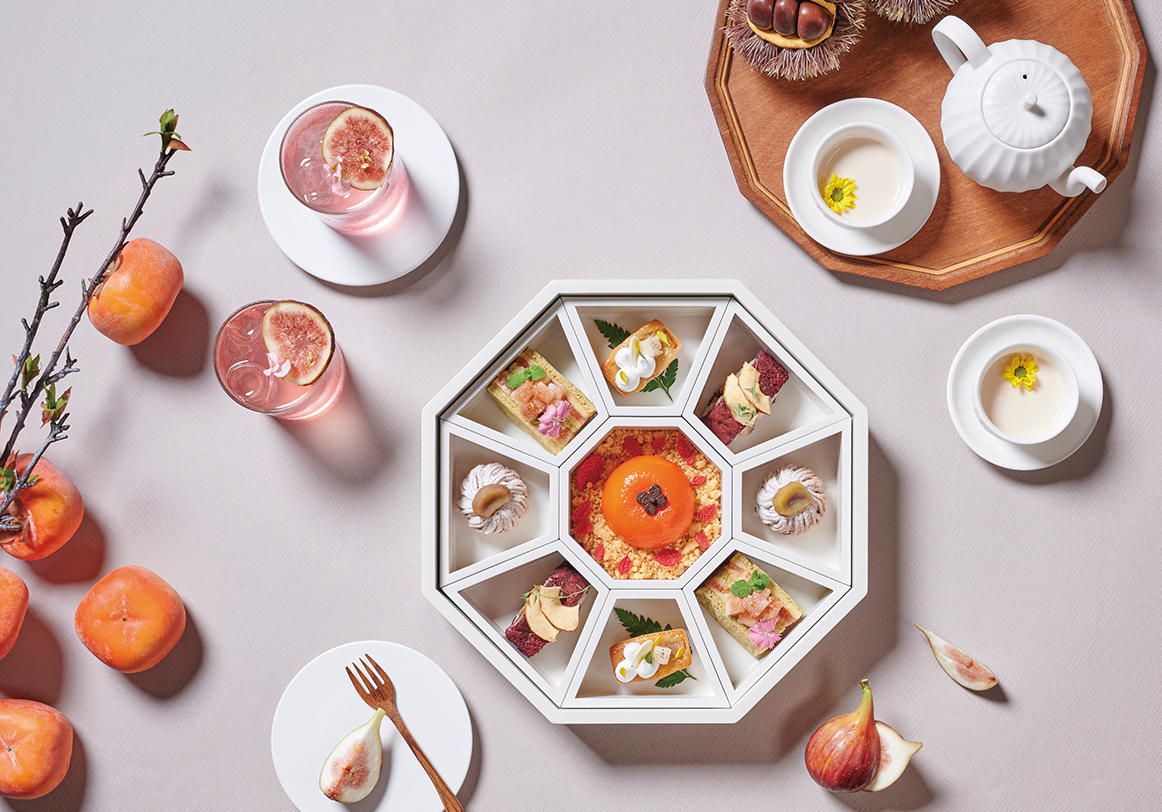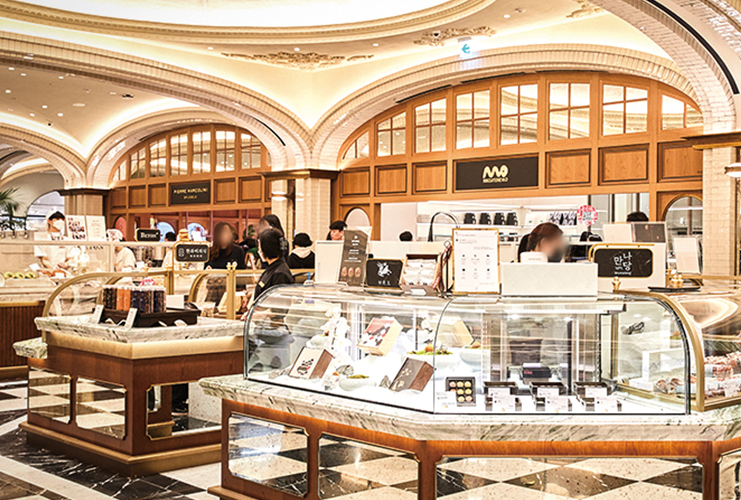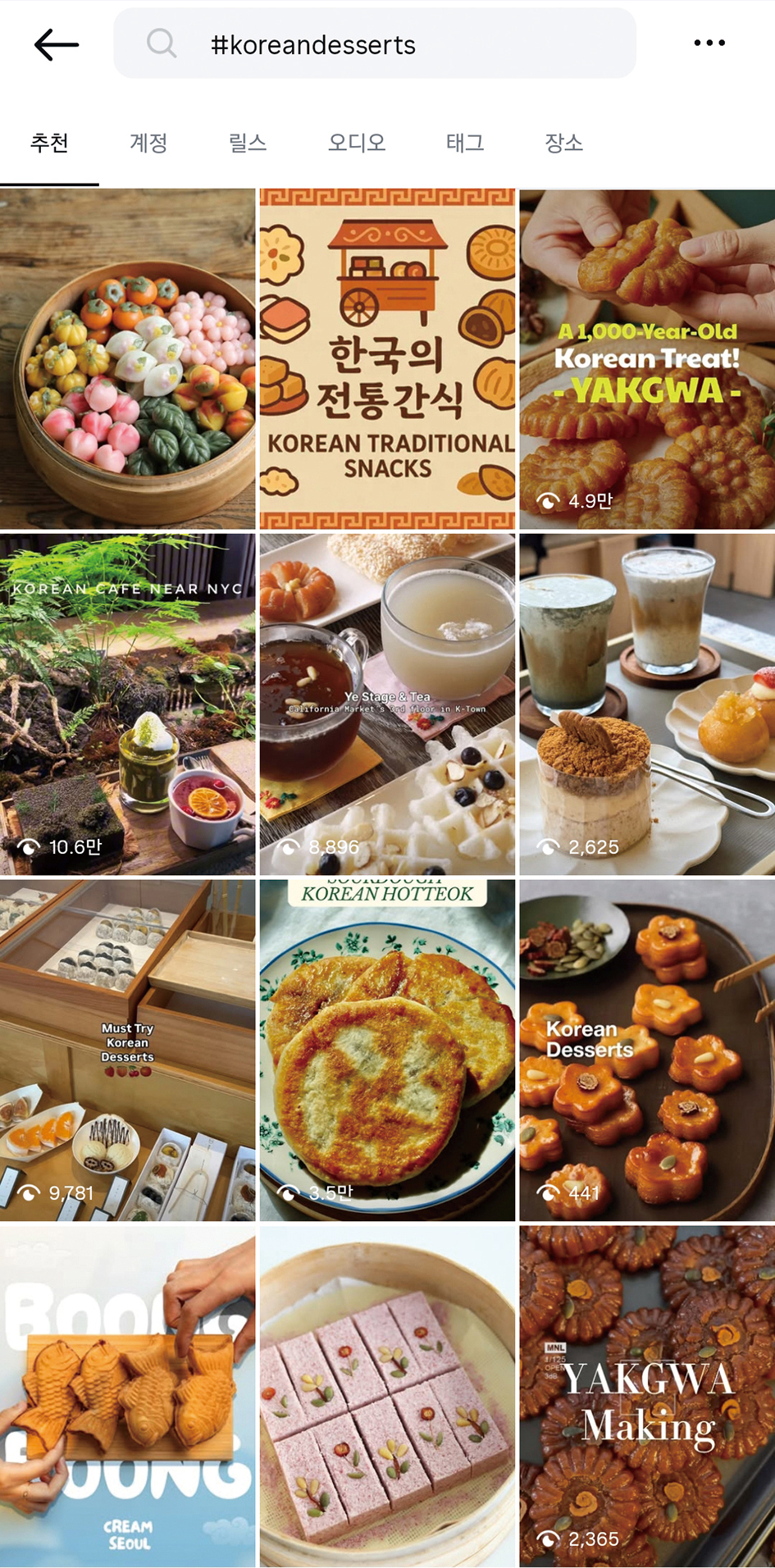
Korea embraces a wide spectrum of flavors, from traditional confections to European desserts. Yet whatever form they take, they always carry a distinctly “Korean touch.” In this way, Korean desserts are creating a unique character found nowhere else in the world.
한국은 전통 과자부터 유럽 디저트까지, 넓은 스펙트럼의 맛을 품고 있다. 그러나 무엇이 되었든 그 안에는 늘 ‘한국만의 터치’가 스며든다. 그렇게 한국 디저트는 다른 어디에도 없는 고유한 결을 만들어가고 있다.
Writer. Hyejoon Kim
Picture the dessert sections in Korean department store basements: baskets brimming with golden-baked breads, delicate petits gâteaux in glass showcases and rows of donuts filled with colorful creams waiting for customers. These spaces are regarded as showcases of the latest trends in Korean desserts.
These areas have become essential market research destinations for overseas buyers and food industry professionals visiting Korea. What’s particularly interesting is that they’ve become such important indicators that major Asian malls and even famous European dessert brands consider them must-visit locations when exploring the Korean market. This reveals how the items Korean consumers embrace influence dessert consumption markets throughout Asia.
A closer look at these spaces reveals the creative and adaptive nature of Korea’s baking and pastry industry. Examples include “Korean-style” bagels—not the classic New York or Montreal variety, but versions with the soft texture and diverse variations Koreans prefer—and Korean salt bread that has evolved beyond Japan’s shio pan.
The category of “Korean-style desserts” continues to expand, from yakgwa (honey cookie) and Gaeseong juak (a popular holiday food in North Korean border city of Gaeseong) once enjoyed by Joseon Dynasty (1392–1910) aristocrats, to jeungpyeon (raised rice cake) fermented with makgeolli (unrefined rice wine) and chapssaltteok (sweet rice cake with red bean filling), with public interest in these treats growing stronger.
Since modern Korean restaurants began earning Michelin Guide recognition, traditional Korean desserts that have been developing over the past decade have moved from restaurant linen tables to everyday dining tables, and Korean desserts are now experiencing explosive growth.
Beyond this, mass-produced snacks and dessert products introduced through video media—particularly a banana-flavored snack that BLACKPINK’s Jennie mentioned liking on an overseas talk show—are piled high on store shelves near Seoul Station and Hongdae Station. Uniquely shaped and flavored milk drinks fill airport convenience stores. These have all become must-buy souvenirs for foreign visitors.
 Hotels in Korea are focusing on the growing popularity and potential of Korean-style desserts, introducing various dessert selections that highlight their unique taste and aesthetic. The photo shows the Autumn Delight Set from Courtyard by Marriott Seoul Namdaemun. © Courtyard by Marriott Seoul Namdaemun.
Hotels in Korea are focusing on the growing popularity and potential of Korean-style desserts, introducing various dessert selections that highlight their unique taste and aesthetic. The photo shows the Autumn Delight Set from Courtyard by Marriott Seoul Namdaemun. © Courtyard by Marriott Seoul Namdaemun.
The emergence of trendy desserts in Korea only began in the mid-to-late 2000s. To trace Korea’s baking and pastry history, we must start with 1945, when Korea gained independence from Japanese colonial rule. As Japanese residents returned home after liberation, they transferred ownership of their bakeries to Koreans, marking the true beginning of Korea’s baking and pastry history.
At this time, alongside rice cakes, bread and cookies made from wheat flour developed as snacks rather than staples. Traditional Korean confections like oranda (a type of fried cookie), yakgwa and yugwa (deep-fried rice puffs) coexisted with soft, savory castella, elaborate two-tier cakes sandwiched with buttercream, red bean buns and soboro (streusel) bread.
Though it began with Japanese baking methods, Korea’s 1989 liberalization of overseas travel meant more Koreans experienced European food culture. Students who studied abroad and acquired dessert-related skills returned home, and their influence led to the emergence of small bakeries in the 2000s featuring European-style breads.
From this point on, a bounty of options appeared: soft Italian breads like ciabatta and focaccia, hard French breads like campagne and baguettes and German breads skillfully using rye and whole wheat. Following savory breads came shops specializing in mousse cakes (moving beyond simple cream cakes), macarons and chocolates.
 The “SWEET PARK” dessert hall at SHINSEGAE GANGNAM, opened in 2024
The “SWEET PARK” dessert hall at SHINSEGAE GANGNAM, opened in 2024 Even desserts such as bread and croffles, which have origins outside of Korea,
Even desserts such as bread and croffles, which have origins outside of Korea,
This evolution raises the question: What is the identity of Korean-style desserts? French regional specialties like macarons and canelés and German stollen (which has become a Christmas favorite), have all been transformed since first arriving in Korea. They now feature the sweetness levels, visual aesthetics and flavor variations tailored to Korean preferences, making them unique products with distinctive appeal when made in Korea. New ingredient combinations like injeolmi (bean-powder-coated rice cake)-flavored macarons, jujube truffle chocolates and dried persimmon stollen stem from the creative desire to incorporate Korean ingredients.
The creativity commonly found in Korean desserts isn’t limited to foods introduced from abroad—it can also be seen in traditional Korean desserts. The juak, baked yakgwa and jeungpyeon enjoyed by Joseon Dynasty aristocrats are traditional Korean confections made with non-glutinous and glutinous rice (rather than wheat flour), soaked in grain syrup, or fermented with makgeolli. These desserts have emerged with modern flavors incorporating classic ingredients like seaweed fulvescens, angelica and mugwort, thanks to skilled artisans who delved deeper as modern Korean restaurants gained global recognition.
Another notable feature of Korean desserts is how traditional treats are being reinterpreted for contemporary tastes. Through various attempts—adding new ingredients and other innovations—artisans have lightened the heavy grain syrup sweetness and chewy textures characteristic of traditional confections, making them more accessible to younger generations and international tourists. This trend has led to well-designed gift packages, product cards in both Korean and English and items that tell the story behind the dessert.
Global interest in desserts enhanced with Korean touches is growing exponentially. Korea is gaining recognition for its ability to develop these into attractive content through rapid advancement and the addition of sophisticated elements.
 TOUS les JOURS, the Korean bakery chain, has a store in the United States. © CJ NEWSROOM.
TOUS les JOURS, the Korean bakery chain, has a store in the United States. © CJ NEWSROOM.
When I opened a Korean restaurant in New York, the dessert course required the most attention. Despite having a specialist who had completed training in traditional Korean royal court desserts, it wasn’t easy to present bite-sized confections at meal’s end that were neither heavy nor excessively sweet, with colors that weren’t overwhelming. No matter how many challenges arose, I believed that capturing Korea’s unique food culture was another step toward the future of Korean desserts. Strong roots are necessary for branches to spread widely and firmly.
Thanks to the efforts of those who share similar goals and aspirations, Korean desserts are now establishing themselves firmly in the global market. Twenty years ago in California, the only Korean foods and desserts available were tteokbokki (stir-fried rice cake), sundaegukbap (blood sausage and rice soup) and bibimbap (mixed rice with vegetables and meat). Now, in the heart of New York, various Korean brands and French desserts and chocolates made by Korean artisans receive global acclaim and are recognized as professional creations that transcend national and ethnic boundaries. Artisans who present multi-dimensional desserts incorporating Korean backgrounds, ingredient combinations and emotional narratives—based on steady exploration and research in Paris and New York—are increasingly gaining recognition.
The catchphrase “What’s most Korean is most global” is finally becoming a reality. Korean desserts represent K-culture—carrying forward tradition while leading the modern era—not as items notable for excessive visual flash and volume. The time has arrived when we must pay attention to Korea’s uniquely original desserts.
 Contents that appear when searching for Korean desserts on Social Network Service
Contents that appear when searching for Korean desserts on Social Network Service
Writer. Hyejoon Kim
Hyejoon Kim studied pastry at Le Cordon Bleu Sookmyung Academy. She works as a food content director with 20 years of experience in the dining industry, covering not only baking and pastry but the broader restaurant scene.